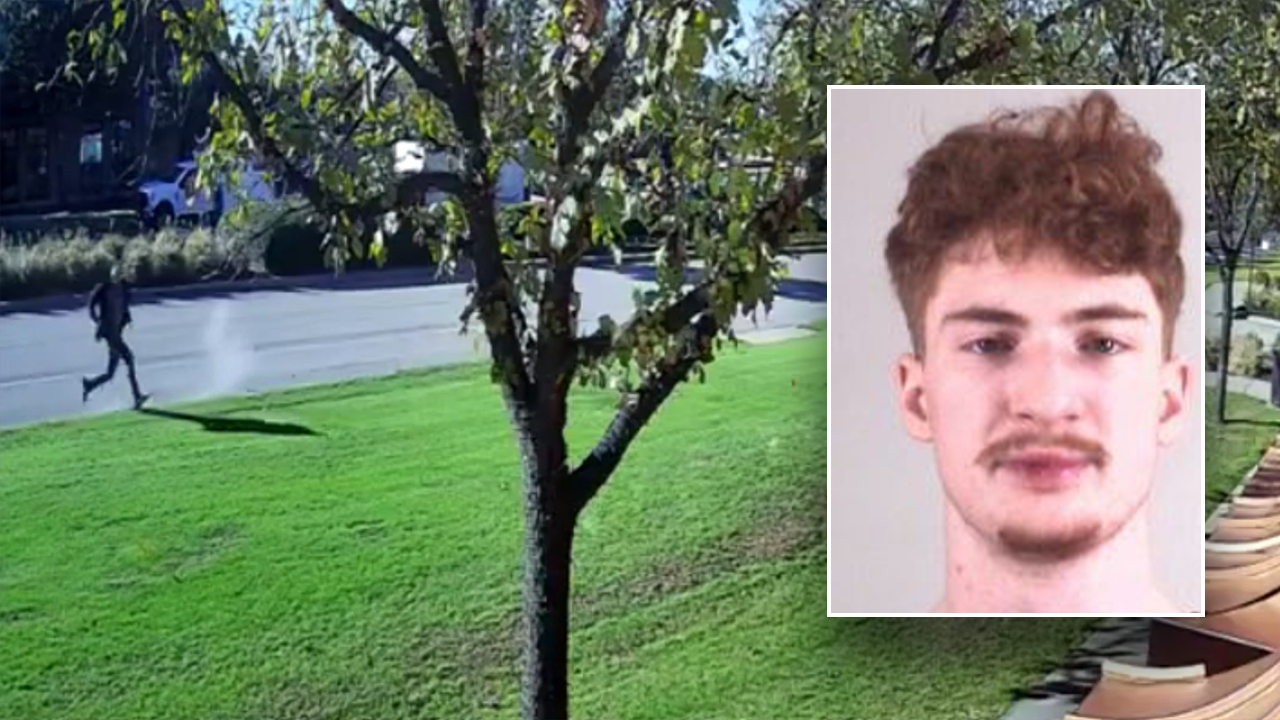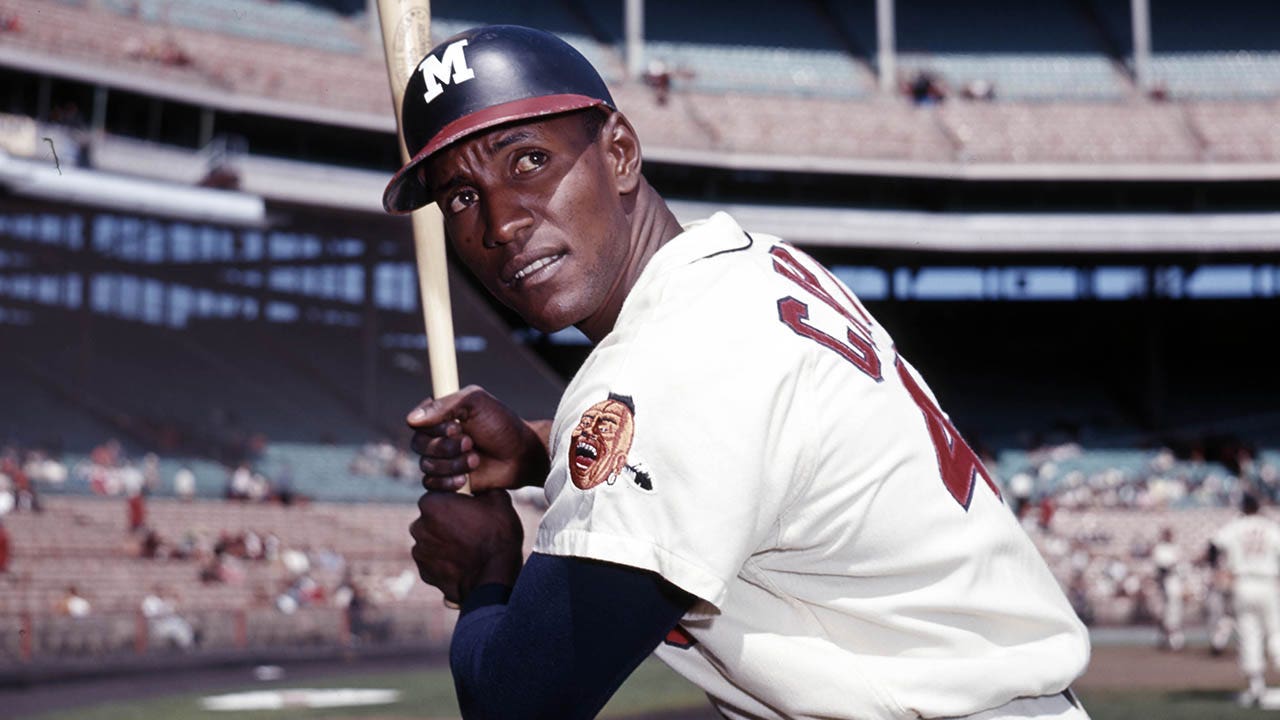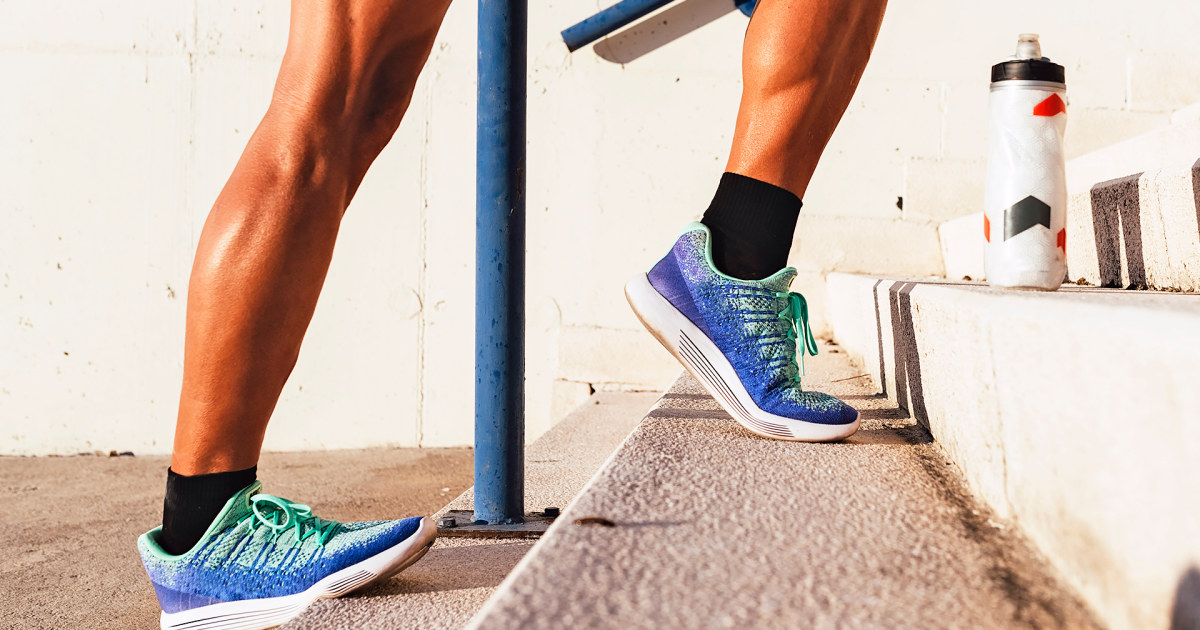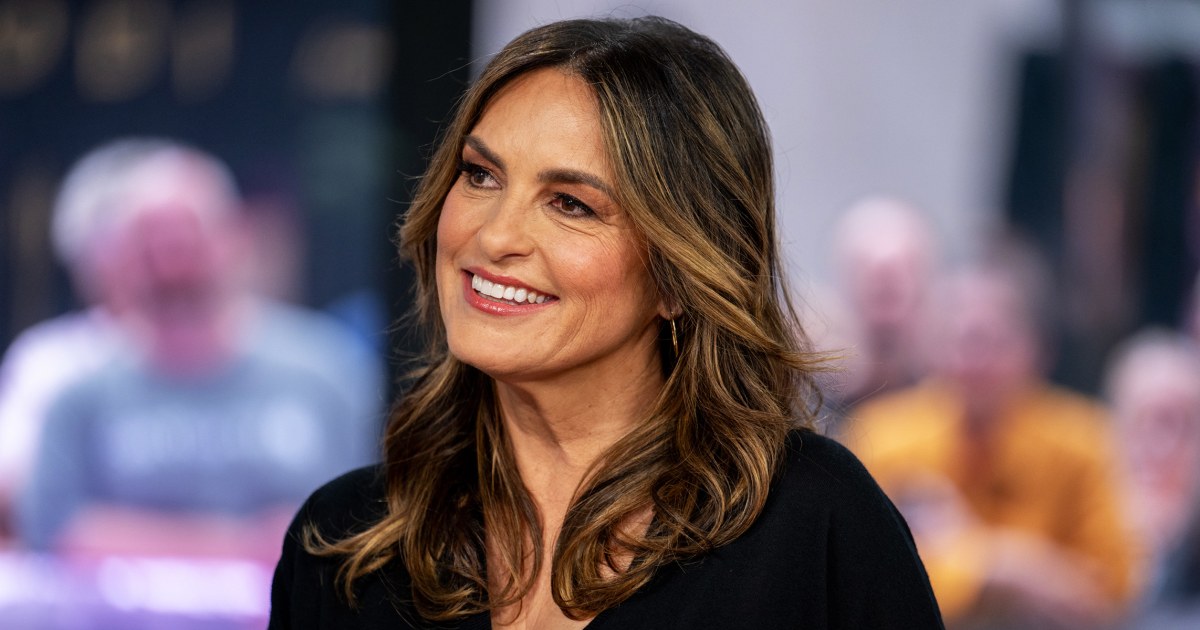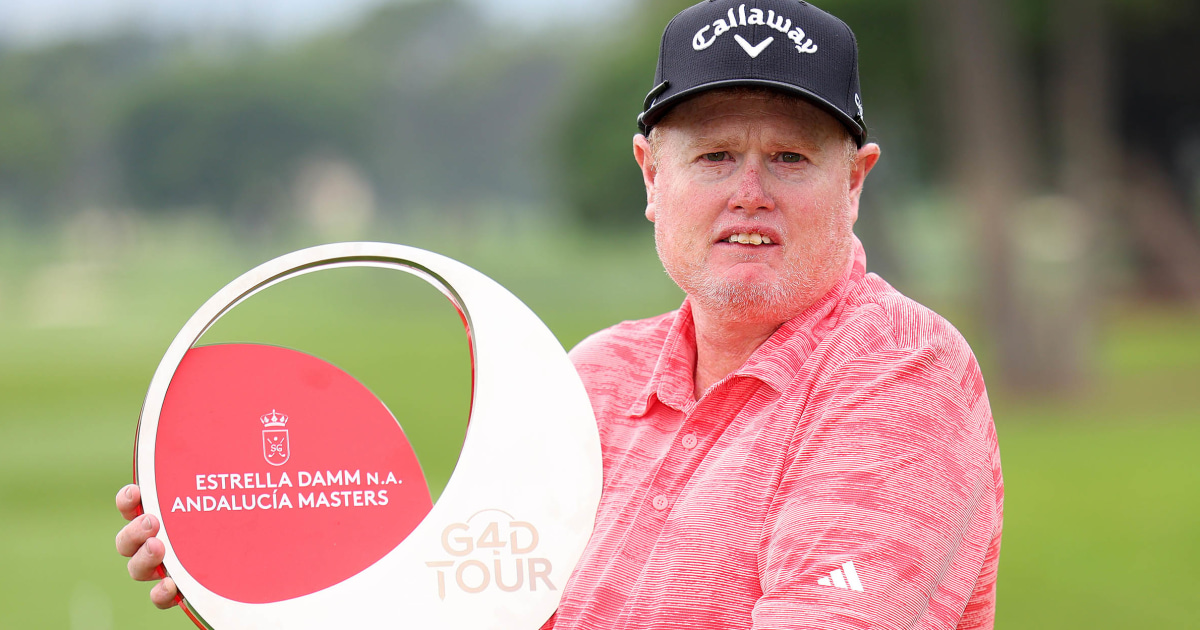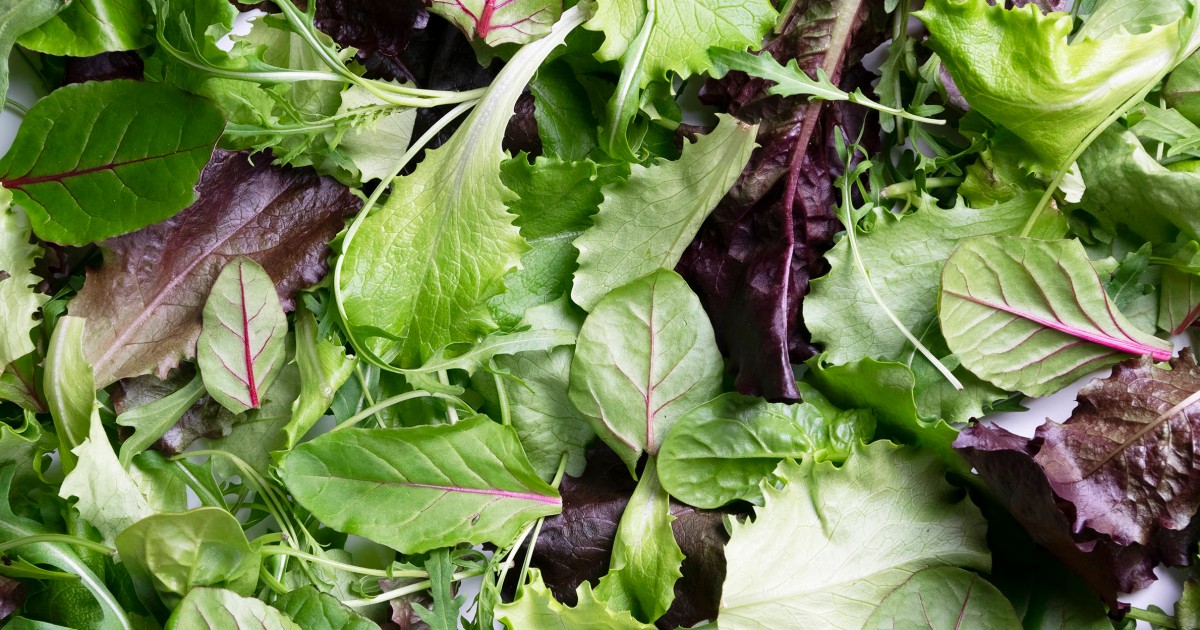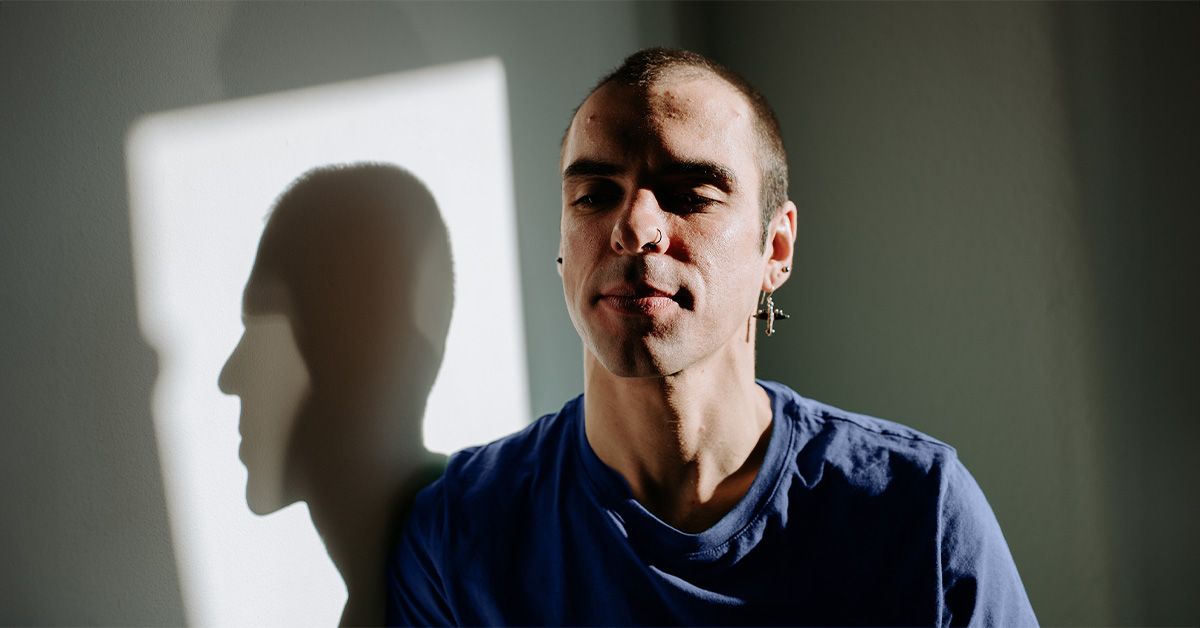Welcome to Start TODAY. Sign up for our Start TODAY newsletter to receive daily inspiration sent to your inbox — and join us on Instagram!
Many lower-body workouts focus on the hamstrings and glutes but neglect a very important muscle group: the calves.
Many people assume that if you work out the legs, the calves will take care of themselves, but unfortunately, that’s not the case. Ignoring the calves can cause knee instability and Achilles strains, while incorporating calf exercises into your routine improves balance and stability while walking, standing, running and performing everyday movements.
Increasing awareness and fine tuning your movements to target the calf muscles will improve and balance your overall leg strength.
Why are strong calves important?
The calves support a lot of the load from the lower body, and propel you forward when doing activities like walking and running. The calf muscles also help you flex your feet and rotate your ankles. The stronger your calves, the higher you can jump, the faster you can run, and the less likely you’ll get injured.
Calf muscles anatomy
The calves are made up of the gastrocnemius and soleus muscles. Each of these muscles is critical to walking, running, jumping and supporting good posture.
Gastrocnemius
The gastrocnemius is the largest part of the calf and the most visible. It connects from the femur bone down to the ankle by way of the achilles tendon.
Toned gastrocnemius muscles not only look good, but also propel you forward. These muscles activate when you lift your heels off the ground, and they cross two joints — the knee and the ankle.
For this reason, the gastrocnemius is more prone to strain and injury than a muscle that only crosses one joint. Think of it this way: the gastrocnemius has multiple jobs in everyday movements, so it has more opportunities for injury.
Soleus
Underneath the gastrocnemius muscle is the soleus muscle, so you can’t really see it. But it’s important — this muscle helps to move and stabilize the lower leg and flex the ankle to keep the ankle joint stable.
What causes calf muscle pain?
Muscle strain is a common cause of calf injury, which can happen from activities like running or jumping without a proper warmup. Overuse like excessive exercise without enough time for recovery can also cause muscle cramps, which are sudden and involuntary contractions that can also lead to calf muscle pain.
If you experience intense pain in the calf muscles, swelling, tenderness when touched, or even difficulty bearing weight on the affected leg, it’s time to give these muscles a rest. It’s important to pay attention to these signals and not push through the pain, as it could worsen the injury.
Which leg exercises strengthen the calves?
Many of your favorite #legday exercises can be used to target the calves:
Lunges
If you want to level up the calf effort in your lunges, try lifting the heel of the front foot while doing a lunge, since lunges engage the calves in multiple ways. The soleus muscle helps stabilize the ankles while gastrocnemius helps stabilize the knees.
Squats
Any squat can become a great calf workout if you lift the heels — this is called a plié squat. You can alternate which heel you lift or do both at the same time.
Jumping
Jumping strengthens your calves, so if you add a jumping, or a plyometric component to your workout moves, it will work the calves. You can jump rope or just hop in place. Be careful, though, as jumping is a high-impact activity. Here’s a quick quiz you can take to figure out whether high-impact workouts are right for you.
Walking
Since the calf muscles push you forward when you walk, you can increase the calf workout by walking uphill. If you’re walking on a treadmill, try taking your hands off of the handrails so that your calf muscles have to do more to stabilize you.
Running
To increase the calf strengthening component of your runs, run on an incline, as you would with walking.
Biking or indoor cycling
If you want to make the calves more of a focus while biking, try steeper hills or increasing the resistance on your spin bike. The thighs do most of the work when you’re biking or cycling indoors, but the calves do a lot of stabilizing, so higher resistance will make the calves work harder.
Best calf exercises at home
Here are some of the best calf exercises you can do at home without any special equipment. Start slow and build up your repetitions over time, and you can either add a few of these moves into your current workout, or create a calf-focused circuit with your favorites!
Calf raises
Start in a standing position with your feet hip-width apart and your core engaged. Squeezing your calf muscles, slowly raise your body, lifting your heels until you’re on your toes. Make sure to stand tall and straight. Then lower your heels back to the floor with control. Repeat.
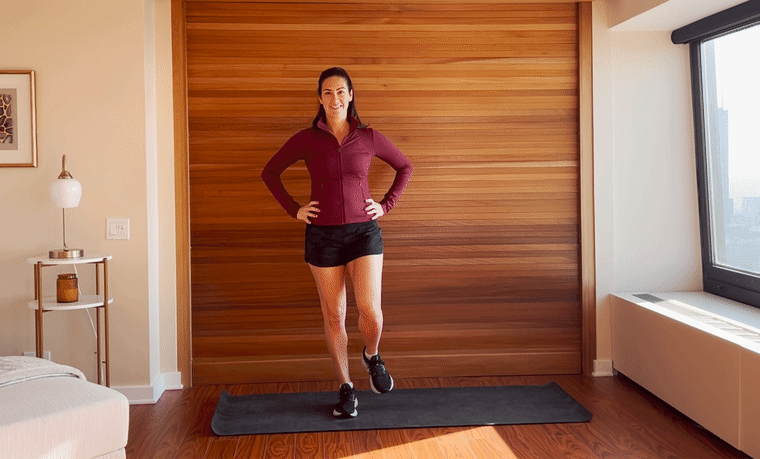
Single leg calf raise
Start standing (next to a wall or chair for stability if needed) with your feet hip-width apart and your core engaged. Raise one foot slightly off the ground. Squeeze the calf muscle of the standing leg, lifting your heel until you are on your toes. Hold at the top, maintaining good upright posture, and then lower your heel back to the floor with control. Repeat 10 times and then switch legs.
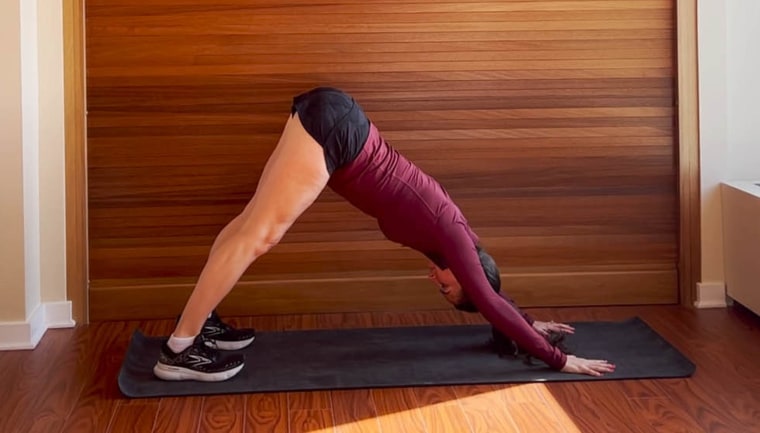
Downward dog
Begin in plank position. Keep your arms straight with your palms pressing down into the mat. With your knees slightly bent, tuck your belly and think about pulling your chest toward your thighs while lifting your butt up toward the sky. Once you are lifted into this final position, straighten your legs gently. Keep your head between your upper arms and relax your shoulders. Reach your legs long so that your heels touch the ground. If this isn’t possible, focus on lengthening your spine rather than forcing your feet to be flat on the ground. Continue to keep your whole body engaged and focus on deep breathing.
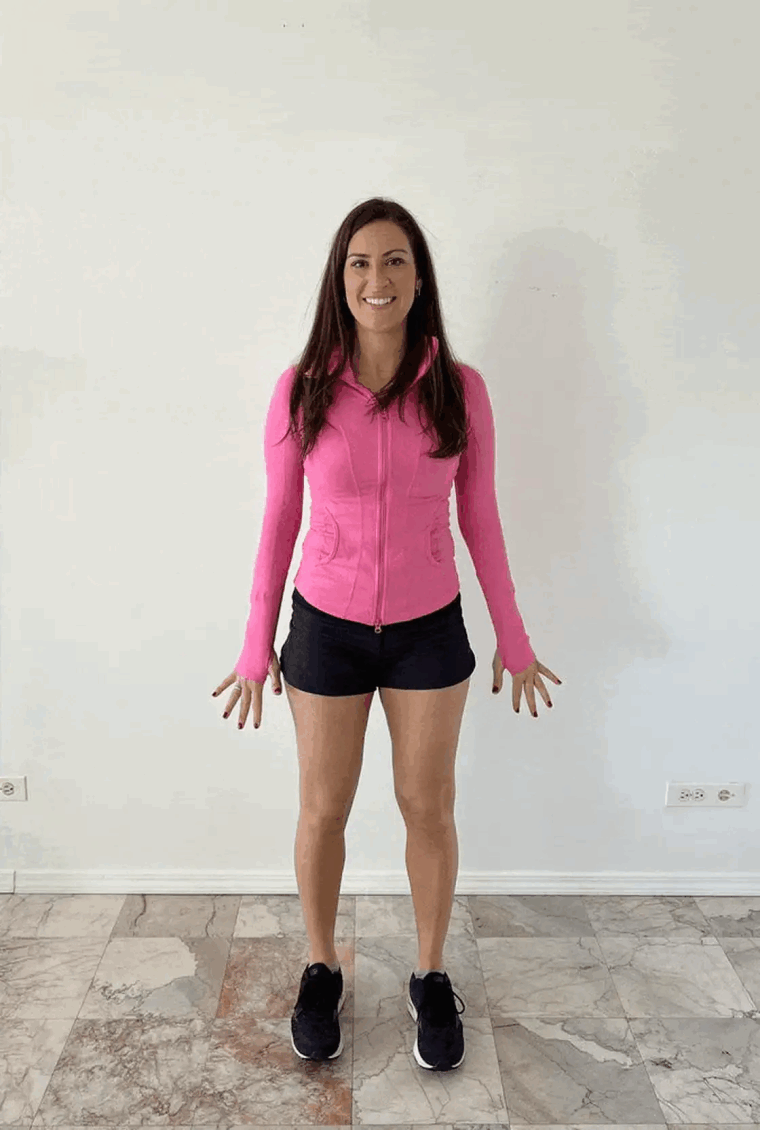
Jumping jacks
Start by standing upright with your legs together and your arms by your sides. With slightly bent knees, jump into the air. As you’re jumping, spread your legs shoulder-width apart, and swing your arms laterally up and over your head. Jump back to the starting position and repeat.

Butt kickers
Start in a standing position with your feet hip-width apart. You’ll be kicking your feet behind you to try and touch your bottom; this will help with hip flexor mobility and can also loosen up the quads. Simply kick your right foot back toward your right glute, and then kick your left foot back toward your left glute. The faster you go, the more you may feel like you’re running in place, so make sure you focus the movement on kicking your feet toward your glute with every step.
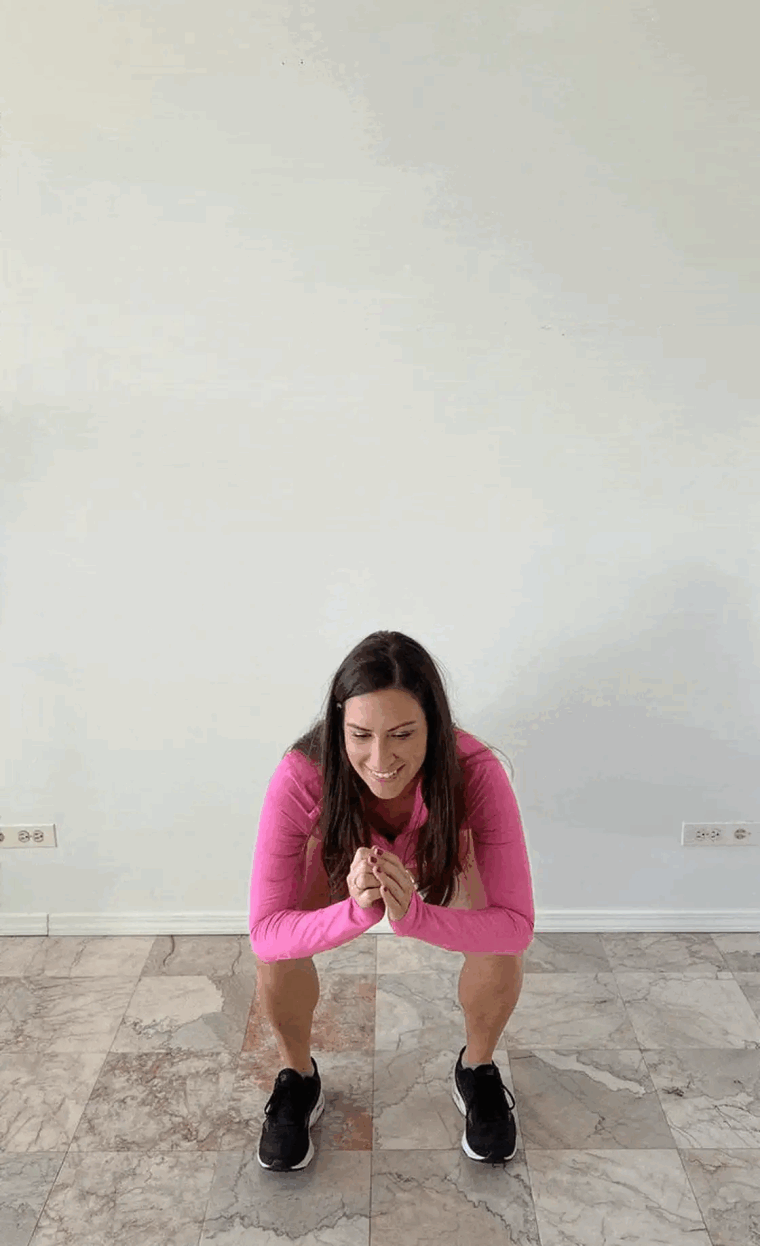
Jump squat
Jump squats are a power move that targets your entire lower body and core. With your feet hip-distance apart, lower into a squat position. Make sure you keep a strong/straight back, and keep your knees behind your toes. With control, jump straight up and swing your arms overhead. Softly return back to your starting position and repeat.
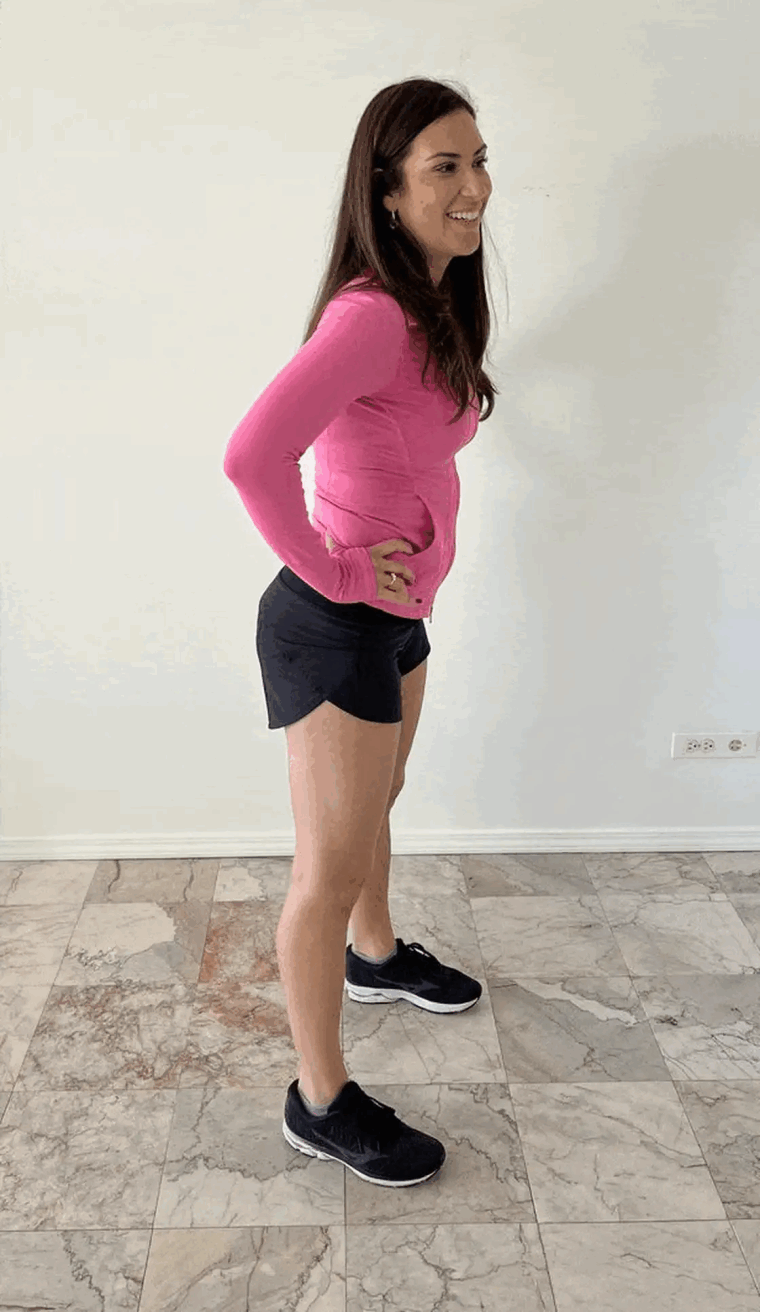
Raised heel squat
Begin this move by standing with your feet wide and your toes pointed slightly outward. With a strong back, engage your core and glutes as you lower into a squat position. Then, press down through your toes to come up and lift your heels. Keep the weight in your toes and you press up to stand. Slowly lower your heels back to the floor and repeat.
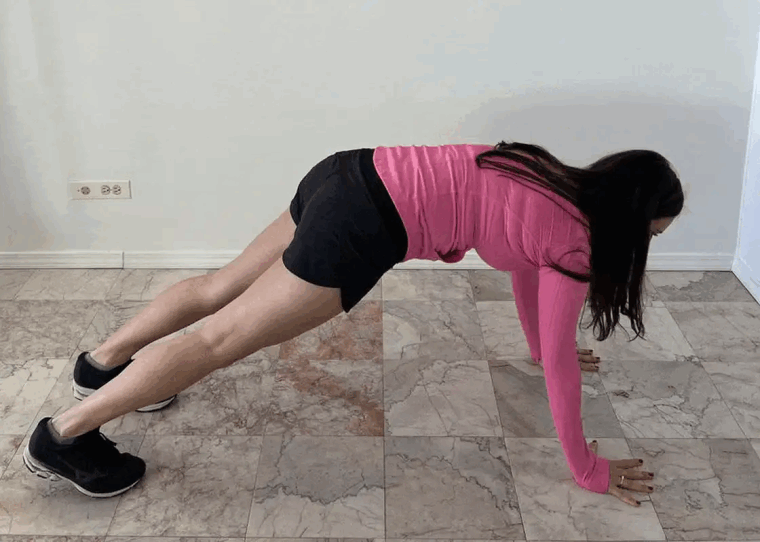
Mountain climbers
Begin in plank position, keeping your back straight, your hips low and your core engaged. Bring your right knee under your chest toward your right elbow. Return your right leg back to plank position; bring your left leg under your chest toward your left elbow. Repeat while alternating your legs, keeping a steady pace. Remember to breathe and concentrate on engaging your abs, glutes and hamstrings.
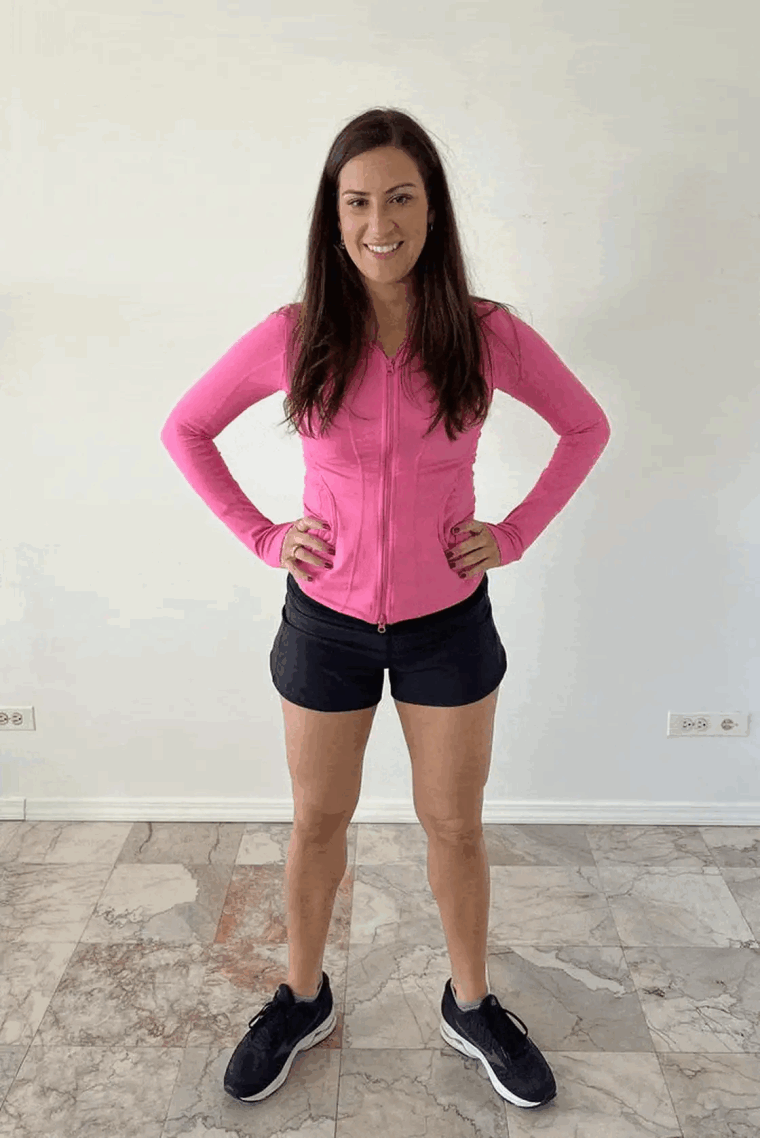
Outward calf raise
Stand with your feet shoulder-width apart, pointing your toes slightly outward. Engage your core to keep yourself stable, and slowly lift your heels up off the floor. Make sure you keep your knees straight but soft throughout this movement to prevent knee injury or pain. Hold briefly at the top, and slowly lower your heels back to the floor. Repeat.
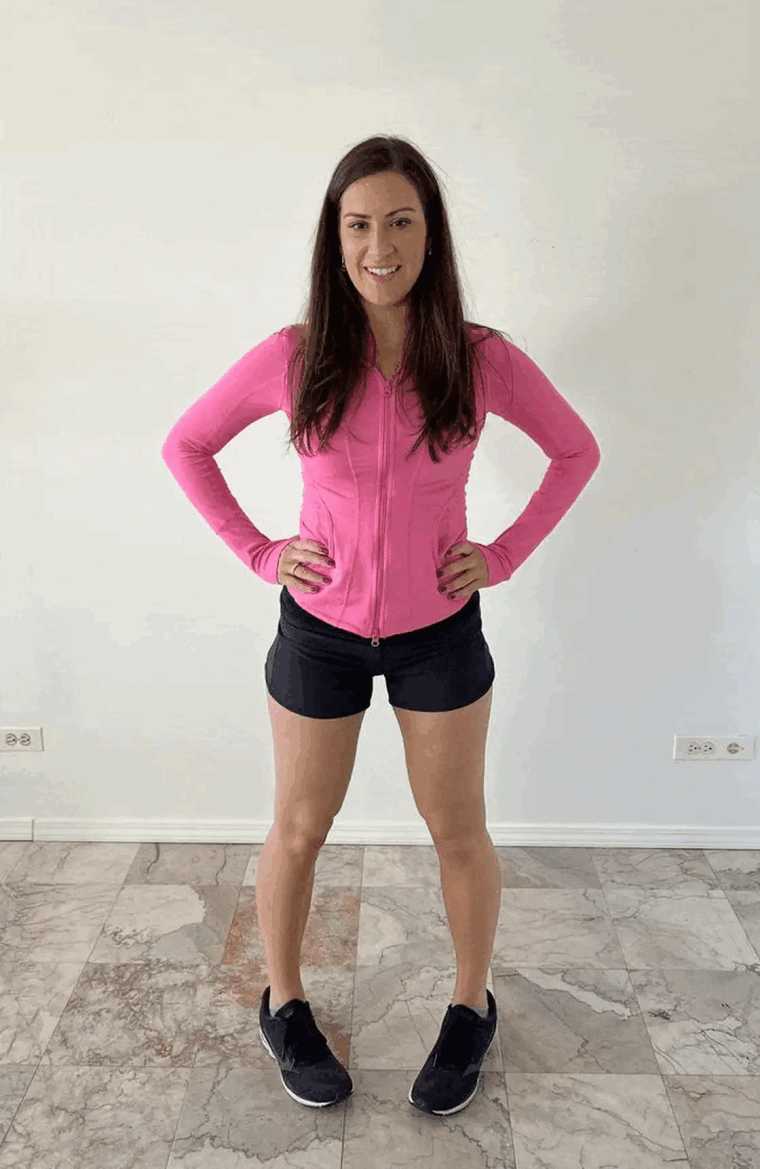
Inward calf raise
Stand with your feet shoulder-width apart, this time, pointing your toes slightly inward. Engage your core to keep yourself stable, and slowly lift your heels up off the floor. Make sure you keep your knees straight but soft throughout this movement to prevent knee injury or pain. Hold briefly at the top, and slowly lower your heels back to the floor. Repeat.
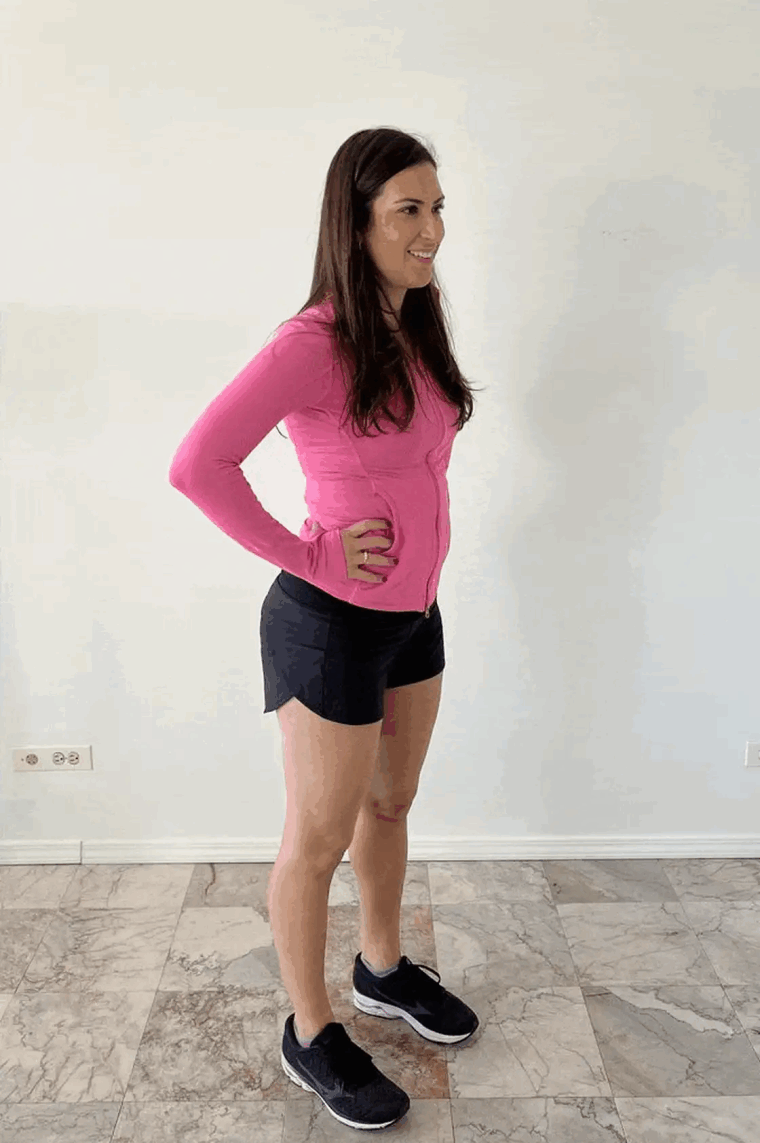
Isometric calf raise
For this move, we’ll begin by performing a traditional calf raise. With a tight core, squeeze your calves as you raise your heels off the ground. Once you reach the top of the motion, pause. Hold here for a deep inhale, followed by a count of 3, and then lower back to the starting position on your exhale. Repeat.
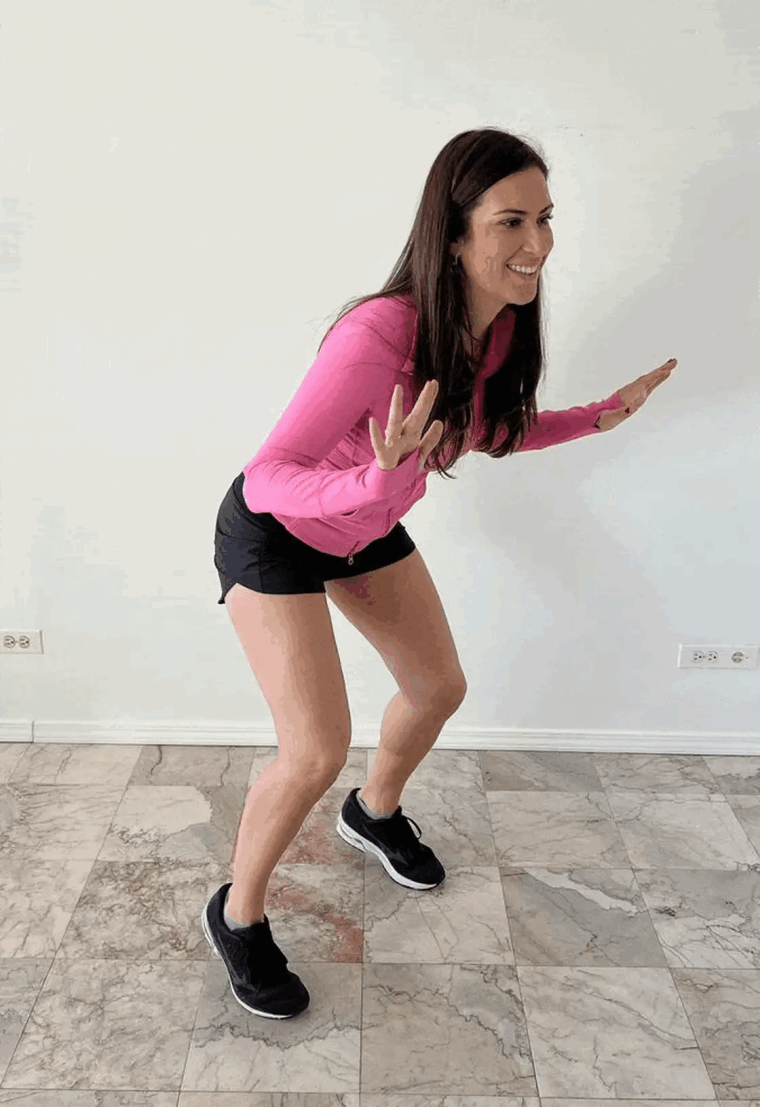
Fast feet
For this exercise, we’ll start in an athletic, half-squat stance. Keep your feet shoulder-width apart, your hips low, and your knees relaxed/slightly bent. Pushing through the balls of your feet, run in place as quickly as you can, swinging your arms forward and back for stabilization and extra speed.
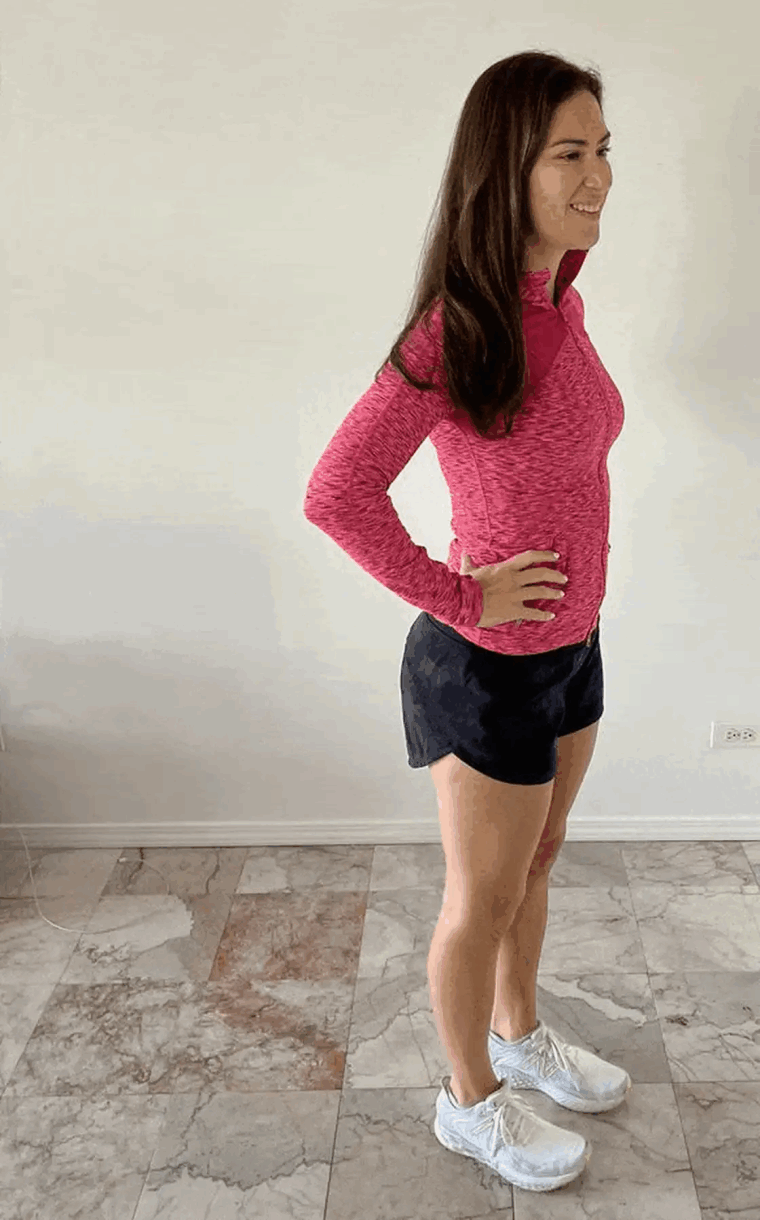
Reverse lunge
In a standing position with feet hip-distance apart, take a large step backward with your right foot. Next, drive your left hip back as you lower your right knee to the floor without touching it. Then, drive off the right foot to return to the starting position. Repeat, this time stepping backward with the left foot. Continue alternating legs, completing 10 repetitions per leg.
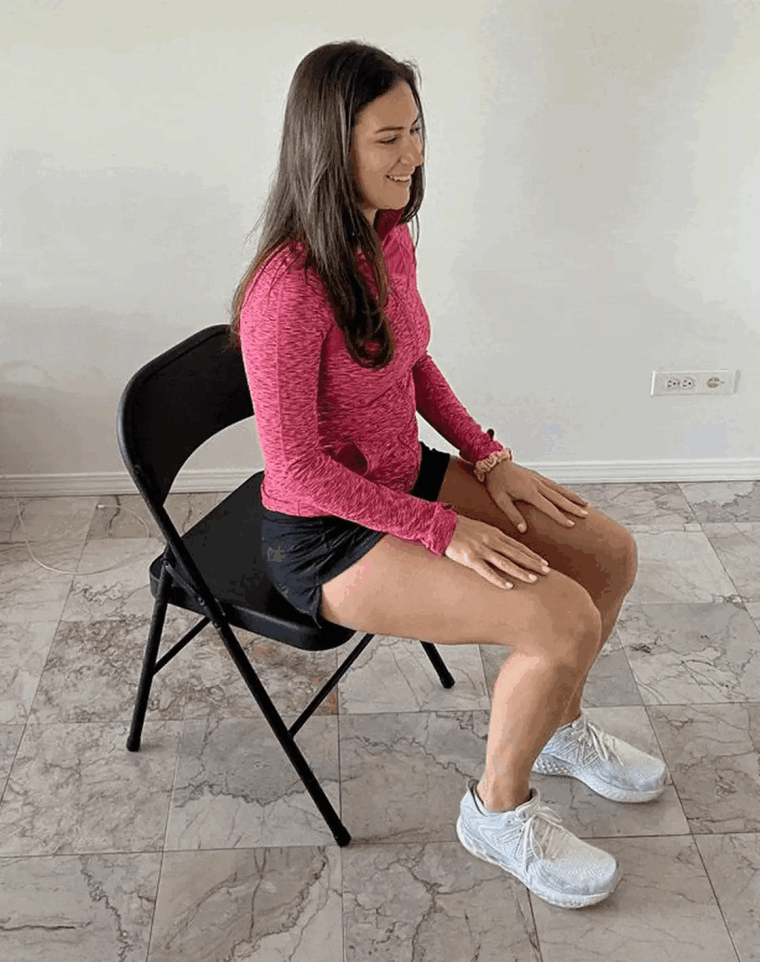
Seated calf raise
Sit on a chair so your feet are comfortably flat on the floor. Raise the heels of your feet as high as you can, coming up onto your toes, then slowly return to the starting position. Repeat for 10 repetitions.
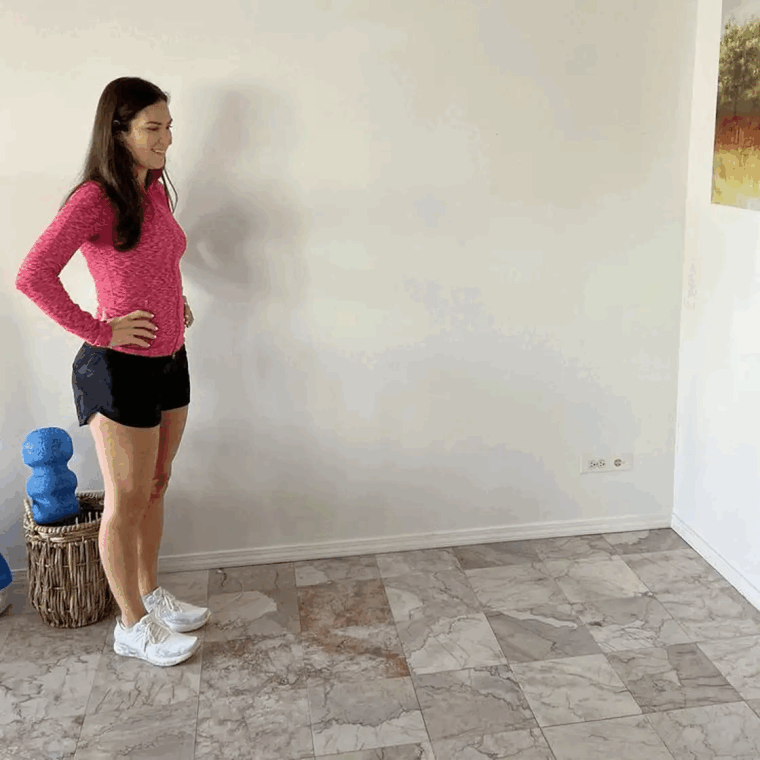
Walking lunge
Start standing with your feet hip-distance apart. Maintaining an upright torso with your core engaged, take an extended step forward with your right foot. Engage your core as you lower down into a lunge position. Bending both knees, lower your back knee to the ground, stopping before touching it. With the weight in your right foot, push back up to a standing position. Repeat on the other leg. Complete 10 repetitions per leg.
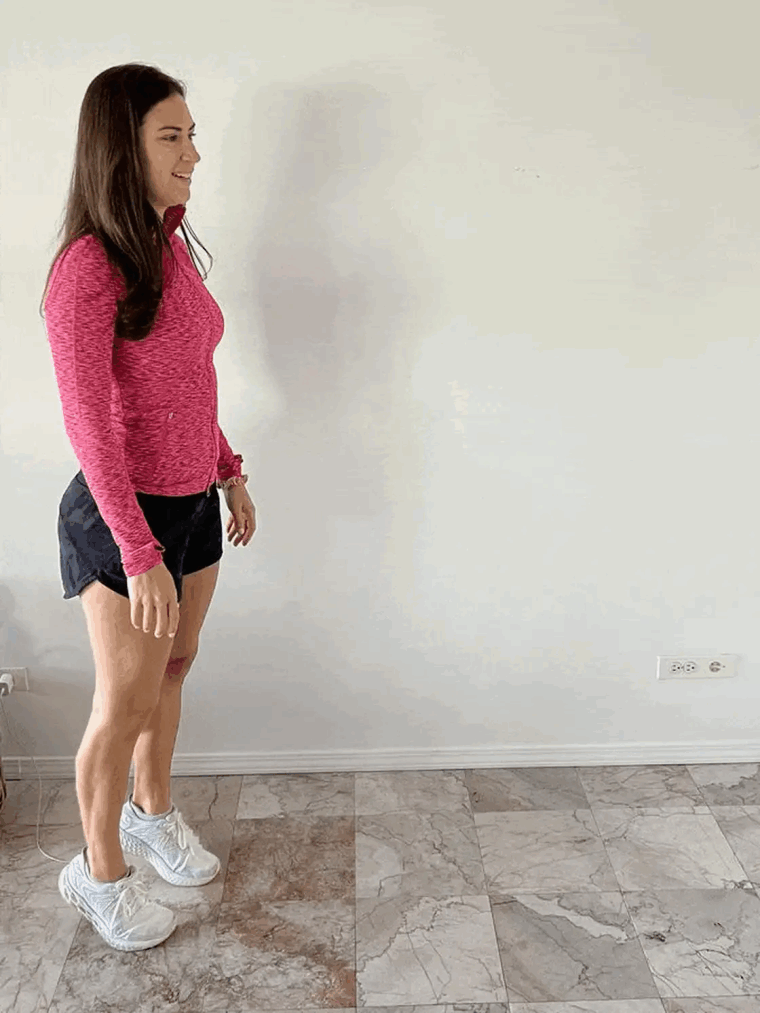
Tiptoe walk
This exercise will help to improve overall balance and strength in the calves. Rise up to the tips of your toes with both heels off the floor. Walk forward in short steps. Continue for 30 seconds. Rest, then repeat two more times.
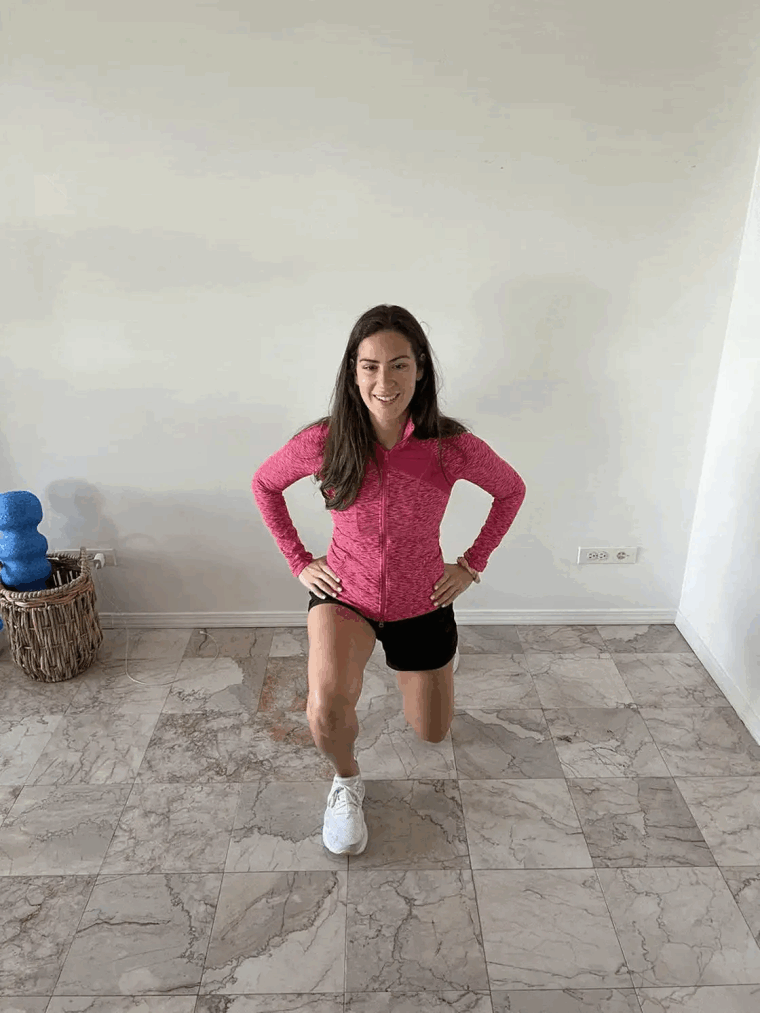
Lunge jumps
From a standing position, widen your stance with one foot in front of the other as if you’re going to enter a lunge. As you sink down into the lunge, engage your core muscles as you explode upward. Quickly exchange feet to switch lunge positions when you land. Do your best to land softly. Do not lock your knees. Repeat for 10 repetitions, or 5 repetitions each leg.
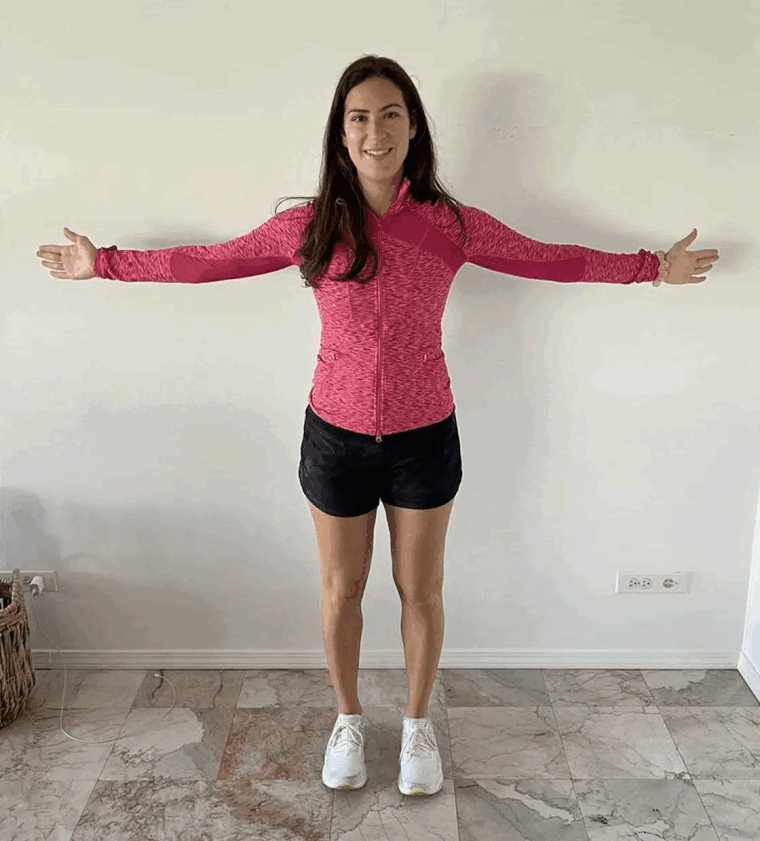
Seal jumps
A variation of a jumping jack, start in the jumping jack position. As you jump, instead of your hands going over your head, they will extend in front of you. Keep your hands at eye level, palms facing each other as they join together. Return to the starting position. Repeat for 10 repetitions.

High knees
Start standing with feet hips-width apart and arms by your sides. Drive one knee up to a 90-degree angle while engaging your core; pump the opposite arm up to shoulder height. Quickly switch legs to repeat the motion. Stay on the balls of your feet to swiftly transition and engage your calves. Repeat for 20 repetitions, 10 on each leg.
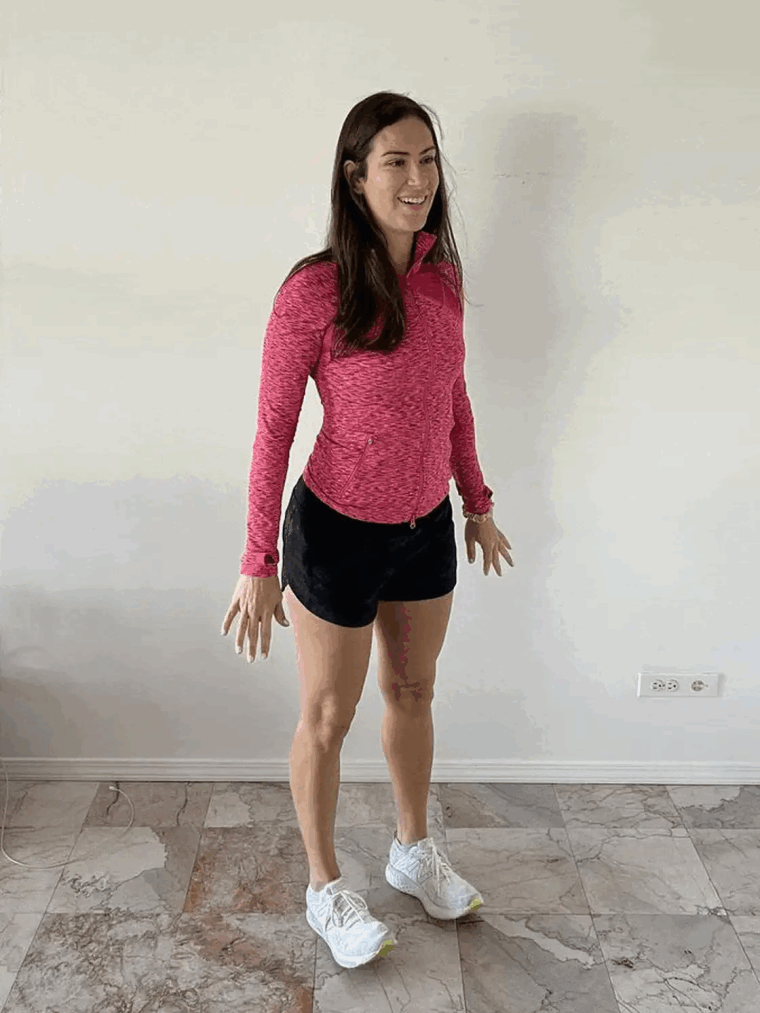
Calf rocks
Stand with feet shoulder-width apart. Engage your abs before shifting your weight onto your heels and pulling your toes off the floor. Then rock forward to rise on your toes, heels off the floor. This is one repetition. Repeat for 10 repetitions.
Read the full article here



